Your solar eclipse checklist: What to look for on the big day

A solar eclipse will be visible across a wide swath of the U.S. on Aug. 21. Here’s how to watch it safely.
- Share via
Eclipse chasers will tell you that seeing a total solar eclipse will change your life.
But keep in mind, a total eclipse is a fleeting phenomenon.
That moment of totality, when the moon completely obscures the face of the sun and the daytime sky plunges into darkness, lasts just a few minutes.
So obviously you are going to want to make the most of your brief moment out of the sun.
If you’ve never seen a total eclipse, you may not know what to expect or what to look for as the world grows dark.
To help you out, we asked a few of our favorite eclipse enthusiasts to tell us what you should do during the total eclipse.
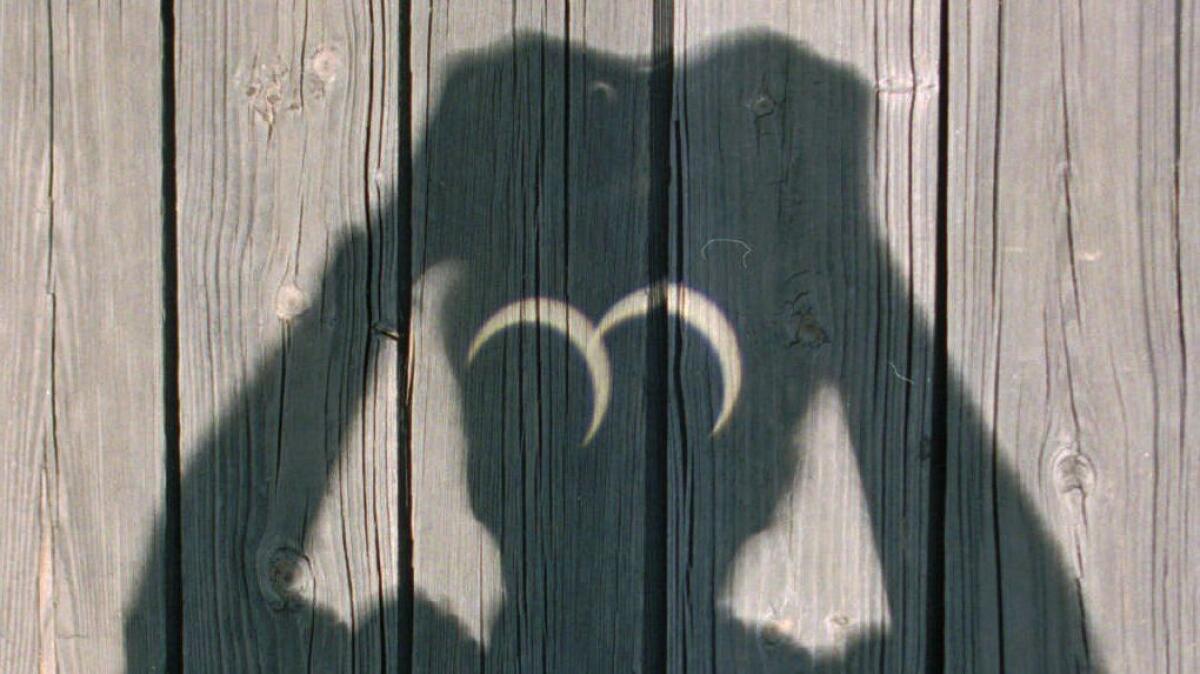
1. Check out the shadows
This is something you can do even if you are not in the path of totality.
During a partial eclipse, the face of the moon will appear to take a bite out of the sun.
You can see this safely by donning a pair of eclipse glasses and looking directly at the sun. But you can also see it reflected in the shadows around you.
One way to do this is to turn your back to the sun, make the pound sign with your fingers and then look at your shadow.
The sunlight passing through the small spaces between your fingers will create a repeated pattern of crescent shapes on the ground.
Sunlight falling between overlapping leaves will project a similar dappled image of the partially eclipsed sun.
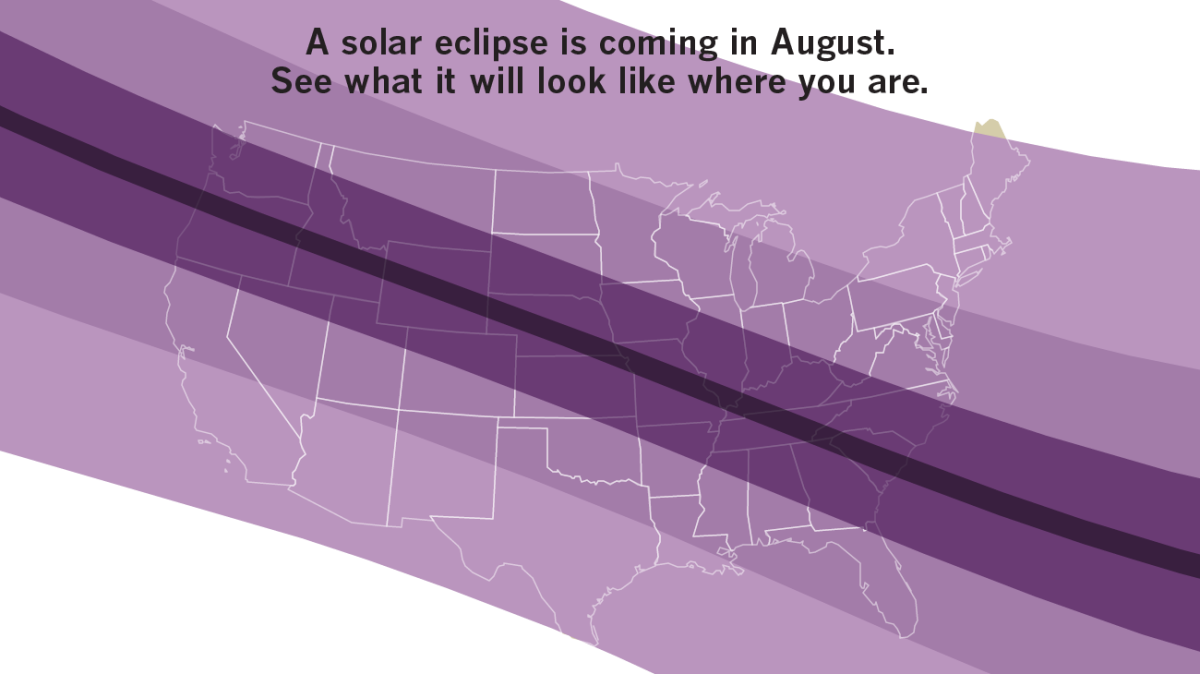
2. Watch the moon’s shadow speed toward you
Not all the action will happen overhead.
If you are standing in the path of totality, you will be able to see the moon’s shadow come speeding across the land before enveloping you in its darkness.
“One of my favorite things is to watch the shadow approach,” said Gordon Emslie, an astronomy professor at Western Kentucky University in Bowling Green who has seen 10 total eclipses. “Seeing this dark band racing across the Earth’s surface at 1,600 miles an hour is pretty amazing.”
3. Look out for shadow bands
In the seconds before totality you will see thin striations of light and shadow move across the ground — even over your feet. These are known as shadow bands.
Shadow bands were first described in the 9th century, but nobody knows exactly what causes them. Scientists believe it has something to do with the way light is refracted in our atmosphere, but there is still more work to be done before they can say for sure.
4. Enjoy the 360-degree sunset
If you you are standing fairly close to the middle of the path of totality, you should be able to see an orange glow on the horizon all around you, even as the sky is dark overhead.
“It will be like the sun set 30 minutes ago in every direction,” said Mike Kentrianakis, project manager for the American Astronomical Society’s Solar Eclipse Task Force.
What you are seeing is light from the part of the Earth that is experiencing a partial eclipse.
“You are looking out to where there is still light, out of the shadow of the moon,” Kentrianakis said.
5. Look for Baily’s Beads
Just before totality, you will see flashes of light along the circumference of the moon. These are known as Baily’s Beads.
What’s behind this phenomenon? Well, despite what it looks like with the naked eye, the moon is not a perfect sphere. Instead, it has a rugged surface of mountains and valleys.
In the final seconds before totality, sunlight passes through the canyons, causing a twinkling light to appear along the edges of the blackened disk of the moon.
The pattern of Baily’s Beads will be different depending on where you are when you see the eclipse. As the moon continues to rotate on its axis during an eclipse, it causes a shifting silhouette to be exposed to the Earth.
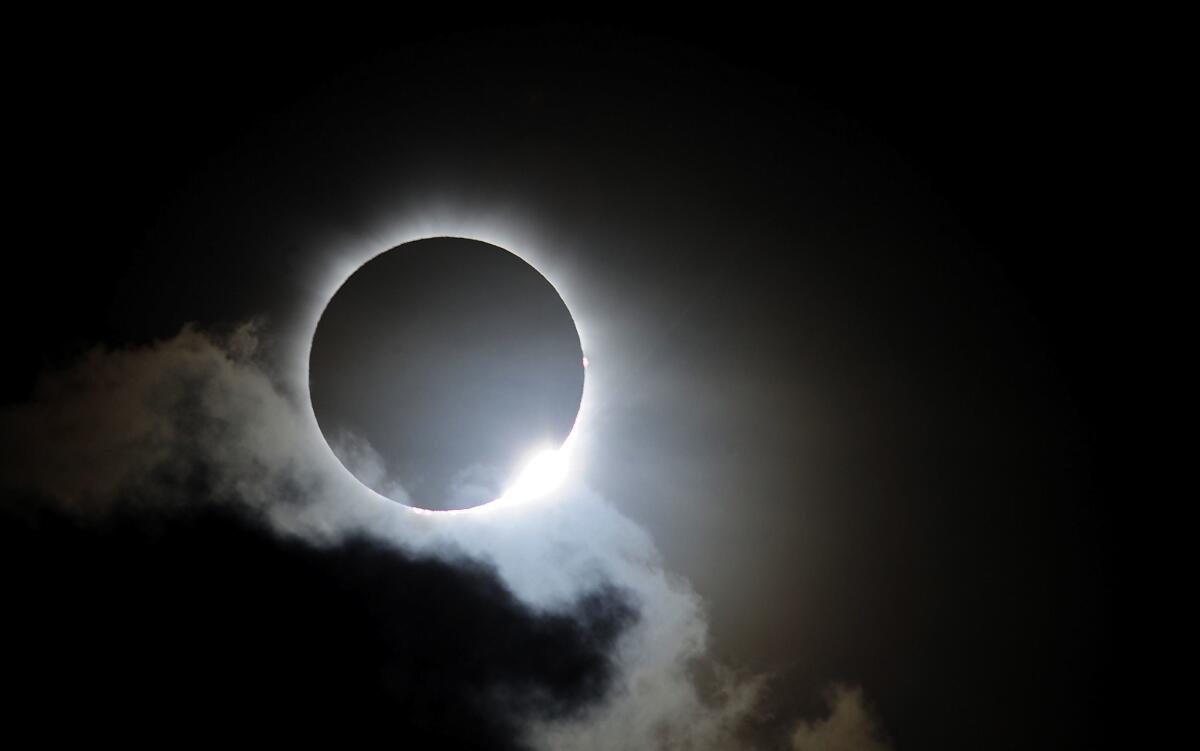
6. Consider the corona
The corona is the outer atmosphere of the sun. It is a vast expanse of super-hot gas held in place by the sun’s powerful magnetic field.
“This is what boggles my mind,” Kentrianakis said. “It’s always there, but you can only see it during totality.”
The photosphere, or main disk of the sun, is so bright that it usually renders the corona invisible.
“It’s like a cop shining a light in your face — you can’t see anything but the light,” Kentrianakis said.
But with the bright light of the photosphere blocked by the moon, the sun’s more subtle atmosphere becomes the main event in the sky.
“It’s like you are seeing the real him or the real her,” Kentrianakis said. “That’s our sun. I don’t know why it’s so beautiful, but it is.”
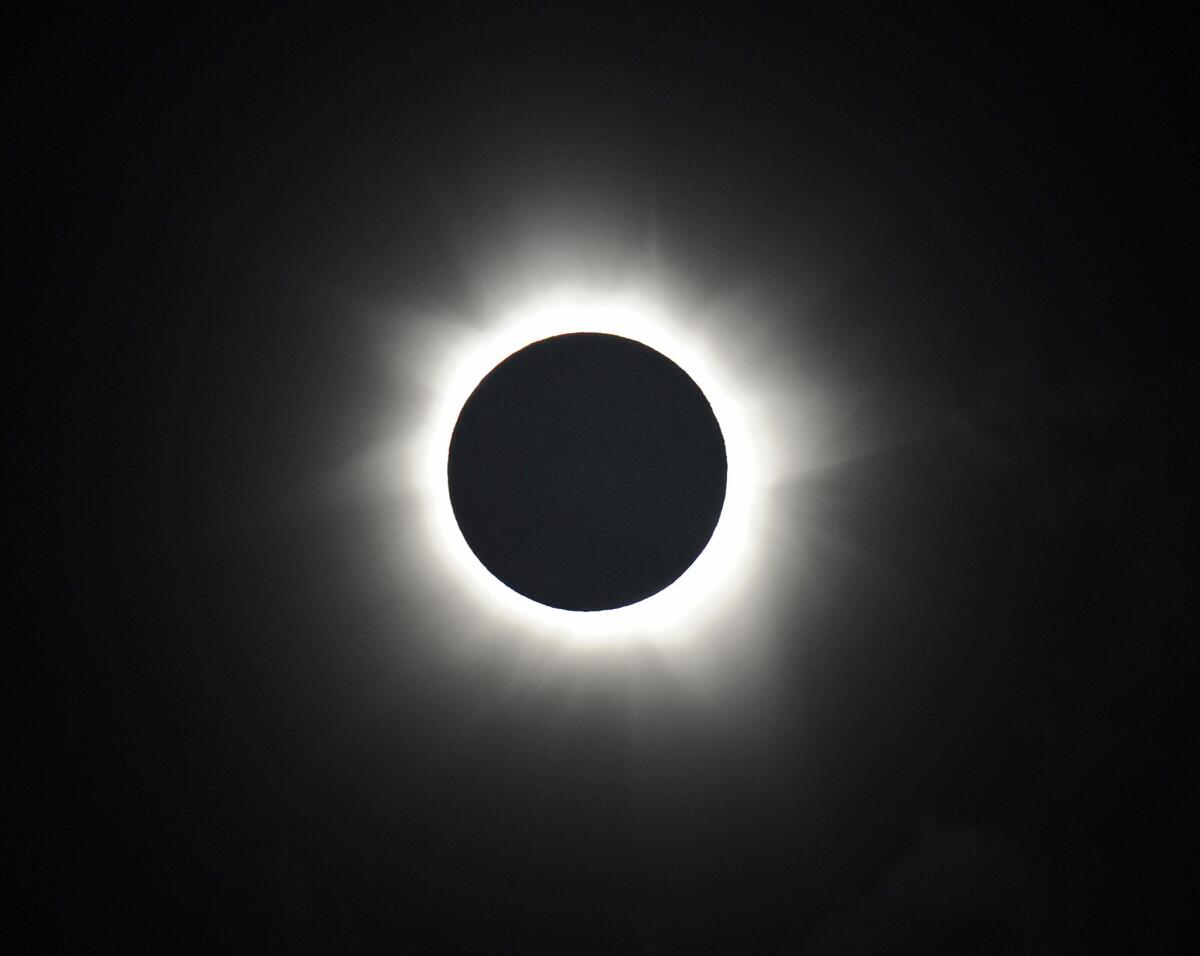
7. Notice the changes in your environment
A lot happens when the moon gets in between the Earth and the sun. The temperature will drop — notice how that feels.
Animals that rely on light cues to determine their behavior may start to act as if it were twilight. Did the birds stop singing? Is your dog acting weird? Have the crickets started chirping? Have any bats come out?
If you happen to be near a plant with flowers that open up during the day, you might look to see if they have started to fold up during totality.
Also, see what stars and planets have become visible. Kentrianakis said Venus will probably come out up to 15 minutes before totality. Jupiter and Mars should also be visible.
8. Look around at other people
If you can tear yourself away from the corona, also consider looking around to see how other people are reacting to the eclipse.
“I’m going to watch people watch this one,” Emslie said. “It’s almost a religious experience.”
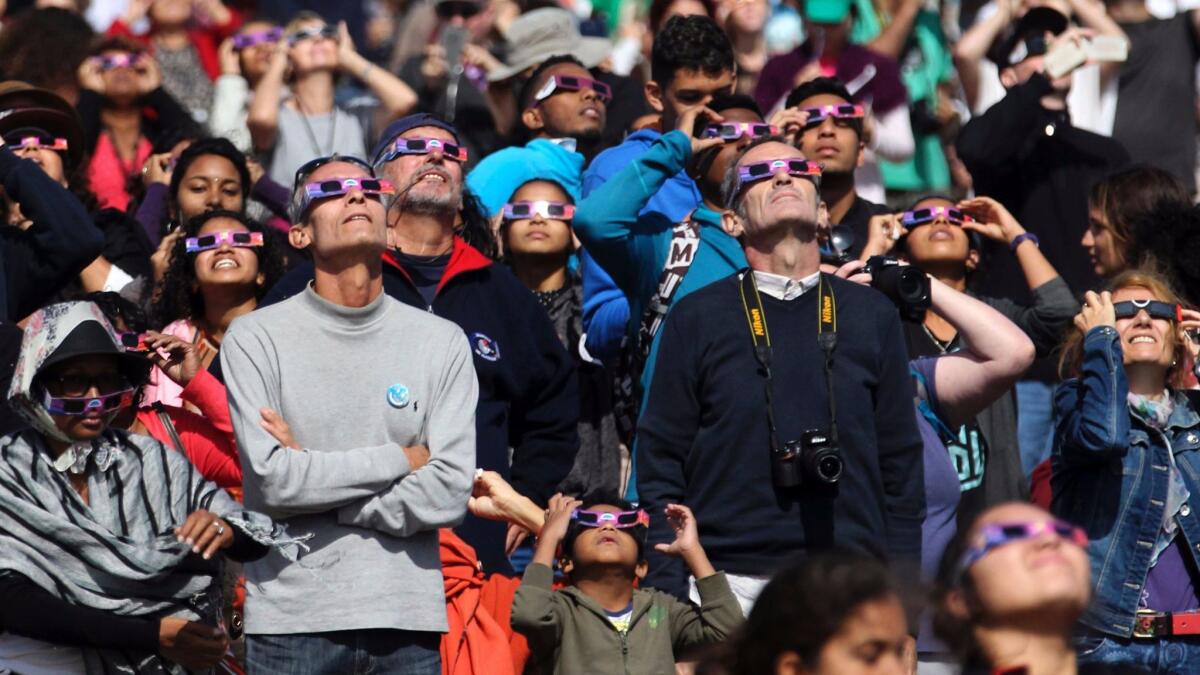
Kate Russo, a psychologist who helps communities along the path of totality plan for an eclipse, agreed.
“Look at what other people are doing,” she said. “ Notice if people have their mouths open. Sometimes they are in tears, and hugging. Mostly during totality everyone is really quiet.”
9. Don’t forget to look within
Russo urges eclipse watchers to spend a few moments just noticing their own experience of standing in the shadow of the moon.
“Focus on what you are feeling,” she said. “Seeing an eclipse is profound, eerie and intense. This is not just a science event, it is a human event.”
10. Maybe put down the camera
It’s technically difficult to get good photos of totality, so unless you’re a professional or astrophotography is really your thing, Russo suggests putting down the camera to better lose yourself in the celestial phenomenon. You can always look at pictures taken by the pros after the fact.
“During a total eclipse, it’s nothing but you and the universe,” Russo said. “It’s such a powerful thing, and anything you are trying to do in that moment will totally interfere with it.”
Do you love science? I do! Follow me @DeborahNetburn and "like" Los Angeles Times Science & Health on Facebook.
MORE IN SCIENCE
Eclipse chasers: What keeps them coming back
Will the Great American Eclipse make animals act strangely? Science says yes
Parades, parties and port-a-potties: Eclipse mania is taking hold from coast to coast




